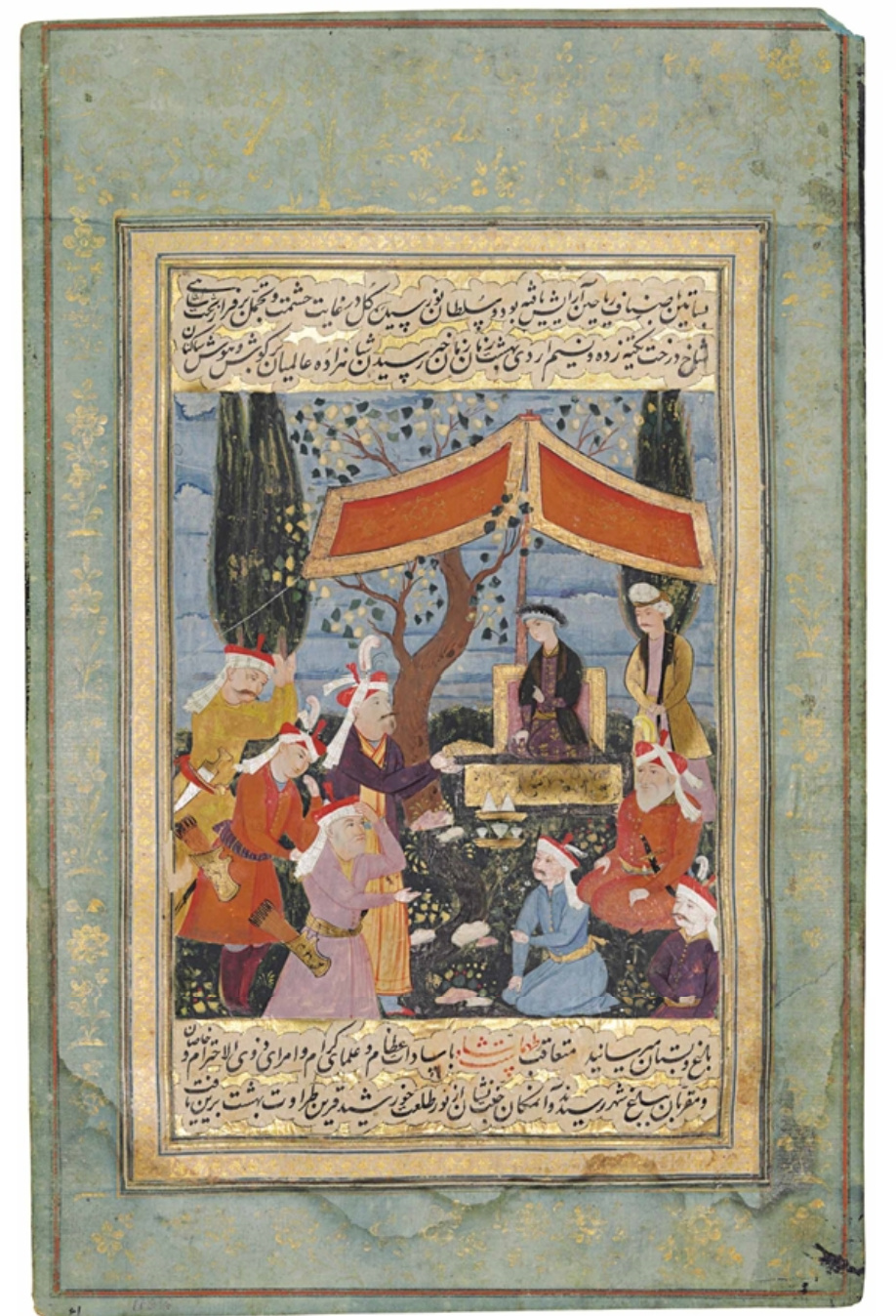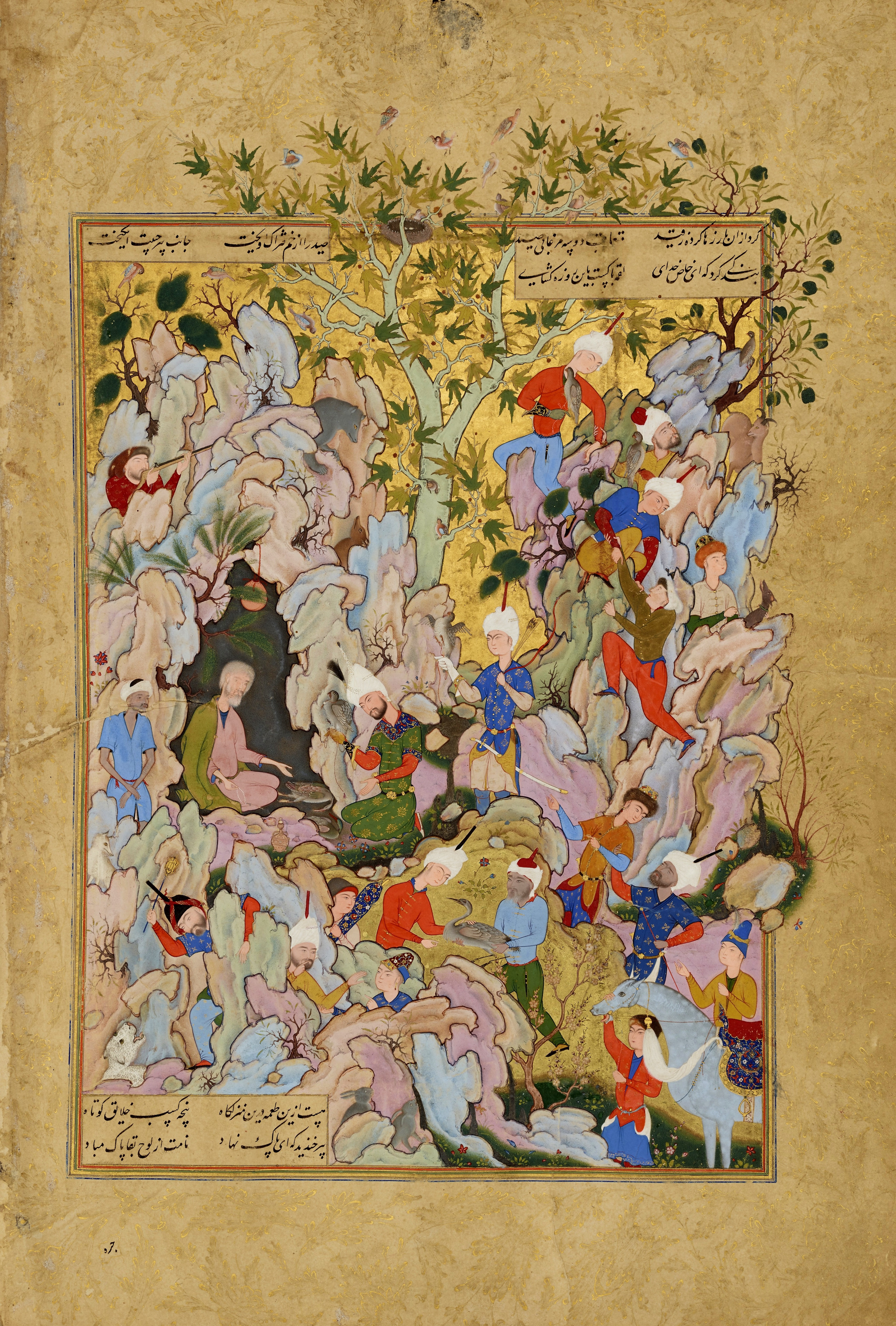|
Gohar Sultan Begum
Gohar Sultan Begum (died 1577) was the daughter of shah Tahmasp I of Persia (r. 1524–1576). She was sister to shah Ismail II. She was married to Ibrahim Mirza Prince Ibrahim Mirza, Solṭān Ebrāhīm Mīrzā, in full Abu'l Fat'h Sultan Ibrahim Mirza ( fa, ابوالفتح سلطان ابراهیم میرزا) (April 1540 – 23 February 1577) was a Persian prince of the Safavid dynasty, who was a favo ..., whom she supported against her brother. References {{Reflist * Hani Khafipour. The Foundations of Safavid State: fealty, patronage, and ideals of authority (1501-1576). — Chicago, Illinois: The University of Chicago, 2013. — P. 254. 16th-century births 16th-century deaths 16th-century Iranian women Safavid princesses ... [...More Info...] [...Related Items...] OR: [Wikipedia] [Google] [Baidu] |
Tahmasp I
Tahmasp I ( fa, طهماسب, translit=Ṭahmāsb or ; 22 February 1514 – 14 May 1576) was the second shah of Safavid Iran from 1524 to 1576. He was the eldest son of Ismail I and his principal consort, Tajlu Khanum. Ascending the throne after the death of his father on 23 May 1524, the first years of Tahmasp's reign were marked by civil wars between the Qizilbash leaders until 1532, when he asserted his authority and began an absolute monarchy. He soon faced a long-lasting war with the Ottoman Empire, which was divided into three phases. The Ottoman sultan, Suleiman the Magnificent, tried to install his own candidates on the Safavid throne. The war ended with the Peace of Amasya in 1555, with the Ottomans gaining sovereignty over Iraq, much of Kurdistan, and western Georgia. Tahmasp also had conflicts with the Uzbeks of Bukhara over Khorasan, with them repeatedly raiding Herat. In 1528, at the age of fourteen, he defeated the Uzbeks in the Battle of Jam by using artillery, unkno ... [...More Info...] [...Related Items...] OR: [Wikipedia] [Google] [Baidu] |
Ismail II
Ismail II (; Born Ismail Mirza; 31 May 1537 – 24 November 1577) was the third Shah of Safavid Iran from 1576 to 1577. He was the second son of Tahmasp I with his principal consort, Sultanum Begum. By the orders of Tahmasp, Ismail spent twenty years imprisoned in Qahqaheh Castle; whether for his recurrent conflicts with the realm's influential vassals, or for his growing popularity between the Qizilbash tribes, resulting in Tahmasp becoming wary of his son's influence. Tahmasp died In 1576 without a designed heir. Ismail, with the support of his sister, Pari Khan Khanum, overcame his opponents and usurped the crown. In order to relieve himself of potential claimants, Ismail purged all the male members of the royal family, except for his full-brother, Mohammad Khodabanda and his three sons. In fear of the Qizilbash influence on the administration and the army, Ismail replaced them with people whom he trusted. Ismail belittled the Shi'ia Islam scholars and sought spiritual guid ... [...More Info...] [...Related Items...] OR: [Wikipedia] [Google] [Baidu] |
Ibrahim Mirza
Prince Ibrahim Mirza, Solṭān Ebrāhīm Mīrzā, in full Abu'l Fat'h Sultan Ibrahim Mirza ( fa, ابوالفتح سلطان ابراهیم میرزا) (April 1540 – 23 February 1577) was a Persian prince of the Safavid dynasty, who was a favourite of his uncle and father-in-law Shah Tahmasp I. He is now mainly remembered as a patron of the arts, especially the Persian miniature. Although most of his library and art collection was apparently destroyed by his wife after his murder, surviving works commissioned by him include the manuscript of the ''Haft Awrang'' of the poet Jami which is now in the Freer Gallery of Art in Washington D.C. Biography He was a grandson of the founder of the Safavid dynasty, Ismail I (1487–1524) by Ismail's fourth son, prince Bahram Mirza Safavi (1518–1550), who was governor of Khorasan (1529–32), Gilan (1536–37) and Hamadan (1546–49), and also a commissioner of manuscripts. Two of his uncles and two of his brothers were to rebel again ... [...More Info...] [...Related Items...] OR: [Wikipedia] [Google] [Baidu] |
16th-century Births
The 16th century begins with the Julian year 1501 ( MDI) and ends with either the Julian or the Gregorian year 1600 ( MDC) (depending on the reckoning used; the Gregorian calendar introduced a lapse of 10 days in October 1582). The 16th century is regarded by historians as the century which saw the rise of Western civilization and the Islamic gunpowder empires. The Renaissance in Italy and Europe saw the emergence of important artists, authors and scientists, and led to the foundation of important subjects which include accounting and political science. Copernicus proposed the heliocentric universe, which was met with strong resistance, and Tycho Brahe refuted the theory of celestial spheres through observational measurement of the 1572 appearance of a Milky Way supernova. These events directly challenged the long-held notion of an immutable universe supported by Ptolemy and Aristotle, and led to major revolutions in astronomy and science. Galileo Galilei became a champion ... [...More Info...] [...Related Items...] OR: [Wikipedia] [Google] [Baidu] |
16th-century Deaths
The 16th century begins with the Julian year 1501 ( MDI) and ends with either the Julian or the Gregorian year 1600 ( MDC) (depending on the reckoning used; the Gregorian calendar introduced a lapse of 10 days in October 1582). The 16th century is regarded by historians as the century which saw the rise of Western civilization and the Islamic gunpowder empires. The Renaissance in Italy and Europe saw the emergence of important artists, authors and scientists, and led to the foundation of important subjects which include accounting and political science. Copernicus proposed the heliocentric universe, which was met with strong resistance, and Tycho Brahe refuted the theory of celestial spheres through observational measurement of the 1572 appearance of a Milky Way supernova. These events directly challenged the long-held notion of an immutable universe supported by Ptolemy and Aristotle, and led to major revolutions in astronomy and science. Galileo Galilei became a champion ... [...More Info...] [...Related Items...] OR: [Wikipedia] [Google] [Baidu] |
16th-century Iranian Women
The 16th century begins with the Julian year 1501 ( MDI) and ends with either the Julian or the Gregorian year 1600 ( MDC) (depending on the reckoning used; the Gregorian calendar introduced a lapse of 10 days in October 1582). The 16th century is regarded by historians as the century which saw the rise of Western civilization and the Islamic gunpowder empires. The Renaissance in Italy and Europe saw the emergence of important artists, authors and scientists, and led to the foundation of important subjects which include accounting and political science. Copernicus proposed the heliocentric universe, which was met with strong resistance, and Tycho Brahe refuted the theory of celestial spheres through observational measurement of the 1572 appearance of a Milky Way supernova. These events directly challenged the long-held notion of an immutable universe supported by Ptolemy and Aristotle, and led to major revolutions in astronomy and science. Galileo Galilei became a champion o ... [...More Info...] [...Related Items...] OR: [Wikipedia] [Google] [Baidu] |





